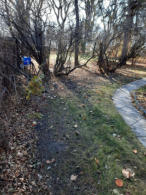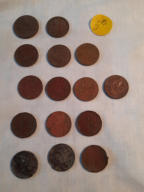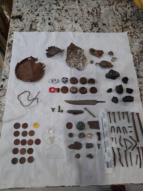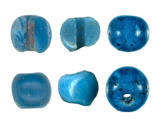

© 2025 Roger Fontaine, Designed by Bison Software

Metalman9
M
E
T
A
L
M
A
N
9


M
E
T
A
L
M
A
N
9


Ph: 204-223-7809
METALMAN9
Ph: 204-223-7809
METALMAN9
Click the date link, then a photo to start larger photo gallery & see descriptions

December 10, 2022 - First Nations Artifacts
December 10, 2022
First Nations Artifacts.
Notable
quote:
"Listen
to
the
Wind,
it
speaks.
Listen
to
the
silence,
it
speaks. Listen to your Heart, it knows." Native American Proverb.
Metal
detecting
is
all
about
metal
and
about
finding
various
kinds
of
metals
in
or
on
the
ground.
But
it’s
also
about
finding
nonmetallic
artifacts
the
old
fashion
way.
It’s
about
developing
“an
Eye”
for
seeing
things
that
a
metal
detector
does
not.
I
like
to
call
this
the
“Human
Element”
to
metal
detecting.
It’s
inserting
you
into
the
art
of
discovery.
The
human
element
will
greatly
amplify
what
you
and
the
metal
detector can do so keep a sharp eye for what lays on the ground.
The
homesteads
and
fields
that
now
make-up
the
family
farm
are
just
not
rich
in
first
nation
artifacts.
For
whatever
the
reasons,
I
don’t
know.
I
can
only
speculate.
If
one
travels
about
4
miles
north,
the
farmer
there,
has
over
the
years
accumulated
quite
a
collection
of
arrowheads
and
stone
tools
from
on
his
land.
Maybe
that
area
was
a
better
hunting
ground.
Maybe
it
was
more
of
an
open
meadow
and
less
dense
forest
or
bush.
Maybe
that’s
where
the
encampment
or
village
was.
One
friend
went
as
far
as
to
suggest
that
there
was
less
poison ivy over there.
But
for
whatever
the
reason,
I’m
always
grateful
for
what
I
can
find.
I
hold
these
items
with
reverence
and
utmost
respect.
These
artifacts
were
held
and
shaped
and
used
by
human
hands
so
many
eons
ago.
Totally
utilitarian,
yet
they
speak
volumes.
They
come
to
us
from
a
time and from a world that is long gone. Now that is food for thought.
The
following
is
a
series
of
artifacts
that
I
have
had
the
good
fortune
to spot while out metal detecting.
My
first
find
was
what
I
thought
was
a
partial
arrow
head.
I
have
been
informed
that
it’s
better
categorized
as
a
“Retouched
Flake”.
*Please
see Sid and Pam’s notations at the end of the story*
Found
October
9,
2020
on
River
Lot
#
153,
Two
Little
Points
Farm.
It
is
to
date
the
only
such
piece
found
on
this
property.
The
stone
is
flint
with
probable
origins
from
the
Knife
River
Quarries
in
North
or
South
Dakota
where
a
vast
amount
of
this
material
was
traded
across
North
America
before
the
arrival
of
the
Europeans.
Flint
is
also
known
as,
and
is
a
type
of
Chert.
Stone
tools
and
projectiles
of
this
sort
have
been
hand
made
for
over
7,000
years.
Unfortunately,
it
is
not
possible
to
date
stone
as
such.
The
retouched
flake
style,
the
way
it
was
flaked
and
its
possible
used
might
however
offer
some
hint
to
the
trained eye as to its possible age.
See: Before last picture.
October 9, 2020. Two Little Points Farm.
The
second
lucky
find,
or
should
I
say
very
very
lucky
find;
a
tiny
pale
blue
bead.
Again
we
are
on
River
lot
#
153.
It’s
not
possible
to
date
this
artifact
either.
Carbon
dating
for
example
only
works
with
what
was
once
a
living
organism.
The
best
estimates
of
age
to
this
piece
vary
from
the
early
1800’s
to
possibly
the
1950’s.
It
looks
very
much
like what is referred to as a Venetian Glass Bead.
See:
April 5, 2021. Story also called: Two Little Points Farm.
The
third
and
my
most
recent
find
is
a
Hammerstone.
I
did
not
write
about
it
in
my
post
as
I
had
yet
to
have
the
artifact
looked
at
by
the
experts and I needed some confirmation of what it was.
What
caught
my
eye
with
this
stone
was
its
shape
of
course
but
more
so
the
groove
on
its
side.
However,
this
same
groove
does
not
extend
all
the
way
around.
The
stone
is
granite
which
is
not
a
soft
rock
to
work
with.
Is
this
groove
just
a
natural
inclusion
or
is
it
man
made?
So
off
to
the
experts
I
go…
again.
And
the
verdict
is
Yes!
This
stone
has
the
characteristic
crushed
crystals
that
one
finds
on
rock,
in
this
case
granite
that
has
been
bashed
and
banged
and
used
to
pound
with.
Bashed
and
banged:
not
really
scientific
terms
but
you
get the idea.
A
Hammerstone
will
have
many
functional
uses
such
as
the
obvious
like
grinding
corn
or
grain
seeds
or
acorns
into
meal.
A
Hammerstone
can
also
be
used
for
breaking
bone
to
get
at
the
marrow
and
for
de-
fleshing
hide.
They
can
also
be
used
to
drive
tent
pegs
and
objects
into
the
ground.
This
specific
stone
weighs
in
at
3
¾
lbs.
It’s
rather
heavy
but
it
feels
comfortable
to
hold.
The
inclusion,
whether
man
made
or
of
natural
origin
fits
the
hand
nicely.
It’s
a
nice
feeling
to
hold
history in such a direct way. Listen to the stone, it speaks.
See: Oct 29, 2022. The Recipe.
Roger
References:
Sid and Pam Kroker: Archeologists (Retired)
https://albertashistoricplaces.com/2019/07/24/knife-river-flint-
quarries-and-the-alberta-connection/
https://www.smithsonianmag.com/smart-news/tiny-blue-beads-
european-artifact-north-america-old-180976966/
*Sid and Pam’s notations*
Both
Pam
and
I
have
reservations
on
calling
the
"arrowhead"
an
arrowhead.
It
looks
like
a
flake
detached
from
a
core
with
a
bulb
of
percussion
at
the
thick
end.
The
upper
edge
seems
to
have
the
micro-chipping
that
occurs
from
use
as
a
cutting
implement,
while
the
lower
edge
also
has
some
small
use
wear
chips.
The
two
notches
(top
and
bottom)
could
be
the
result
of
purposeful
chipping
to
provide
grooves
to
attach
the
flake
to
a
handle
to
use
as
a
knife.
If
this
is
the
case, we would categorize the artifact as a "retouched flake".




































